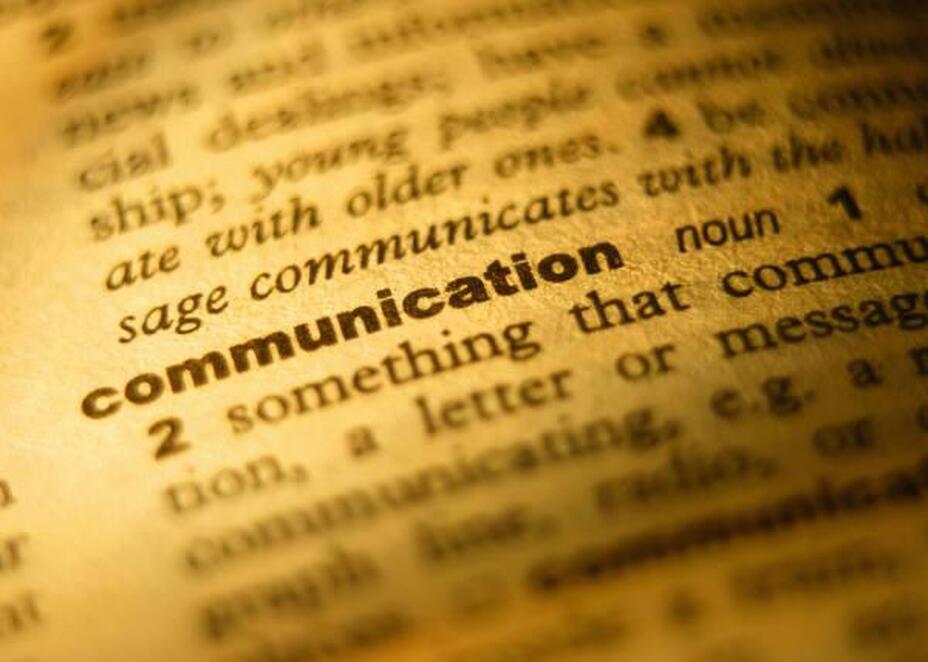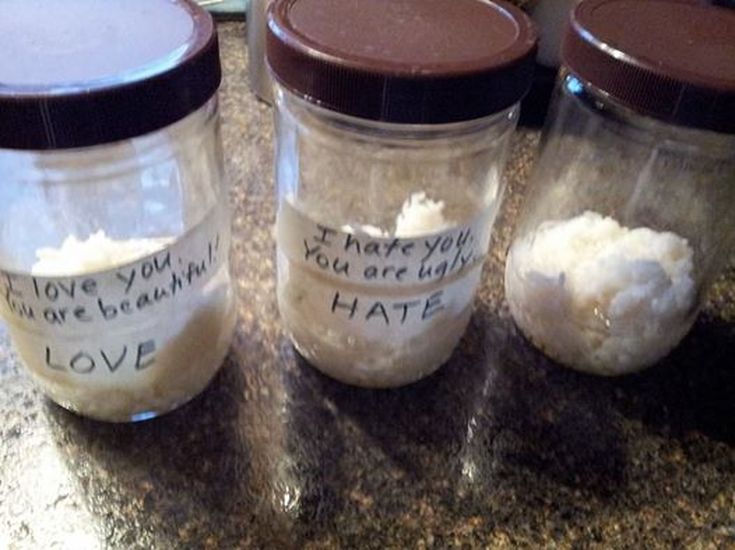|
By Karen Carnabucci, LCSW, TEP Words have power. (So be careful about what you think about your spouse, your friends, your enemies, yourself and everyone else.) In other words, notice what you're thinking. Masaru Emoto, the late Japanese scientist, demonstrated the power of words with his experiments years ago when he pasted labels of "love" and "gratitude" on some jars of water and "hate" and "blasphemy" on others. He chilled the water, then took pictures of the freezing water crystals with a high-powered microscope. The water with the uplifting words made beautiful snowflake-like crystals; the others with the words like "hate" were blotchy, discolored and malformed. I've been fascinated by these reports for years and recently was inspired to start my personal experiment with a take-out box of leftover white rice from a local Chinese restaurant. The experiment seems especially pertinent now, as we struggle as people and as a country with these feelings in our personal lives and in the larger collective. Here’s what I did:
Each day, I spoke the words out loud to two of the jars, ignoring the third jar. I sent the same thoughts to the jars, and clients and other visitors to my private practice office joined in the project as they noticed it. By the 15th day, the "hated" rice developed a big splotch of black mold in the back of the jar. The “loved” rice was clean and white. The rice in the ignored jar showed a tiny pinpoint of black. At the end of the month, the moldy splotch on the "hated" rice had doubled. The "loved" rice remained clean. The ignored rice had not changed. Amazing, huh? I frequently assign my coaching and psychotherapy clients a set of loving thoughts to telepathically direct to people, family members and others, when there is conflict or tension. They often return to report surprising shifts in the quality of the relationship If you want to know more about Masaru Emoto, his web site is here. You may also wish to check out his book The Hidden Messages of Water. Here's what the experiment looked like. The first picture shows the rice at the beginning of the experiment: Here is the photo of the same jars, 15 days into the experiment. Notice the mold on the middle jar, the "hated" rice. Finally, here are the jars at the end of the 30 days. The mold on the "hated" jar has doubled.
4 Comments
Mar
9/16/2018 10:34:04 pm
That experiment reinforces my theory that good news impart life, while bad news destroys. Our modern media, (commercials, tv "newscasts", facebook, etc,) have been a blight our society.
Reply
garima agarwal
10/2/2018 02:34:12 pm
a very small thing but its imapct is very vast. something which people easily ignore bcz they dont understand the importance. a very good thought written by you.
Reply
Nate
11/4/2020 05:15:52 pm
This is truly fascinating, however, you need to run this experiment more than once to find out if there is truth in the hypothesis.
Reply
Robert B Diver
9/12/2021 07:02:06 am
Interesting
Reply
Your comment will be posted after it is approved.
Leave a Reply. |
AuthorKaren Carnabucci, LCSW, TEP, is an author, trainer and psychotherapist who promotes, practices and teaches experiential methods including psychodrama, Family and Systemic Constellations, sand tray, mindfulness and Tarot imagery. Archives
December 2023
Categories
All
|




 RSS Feed
RSS Feed